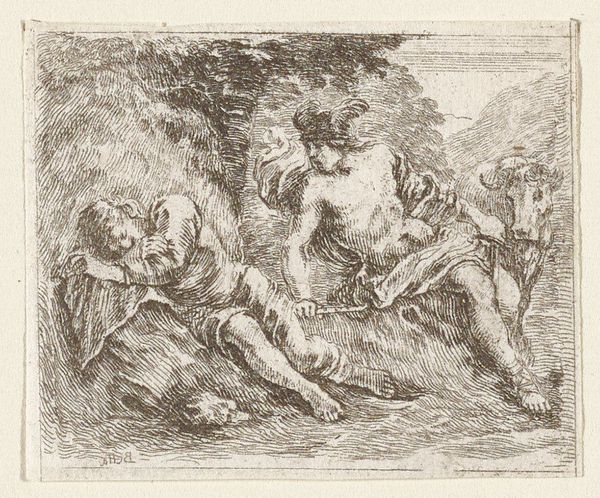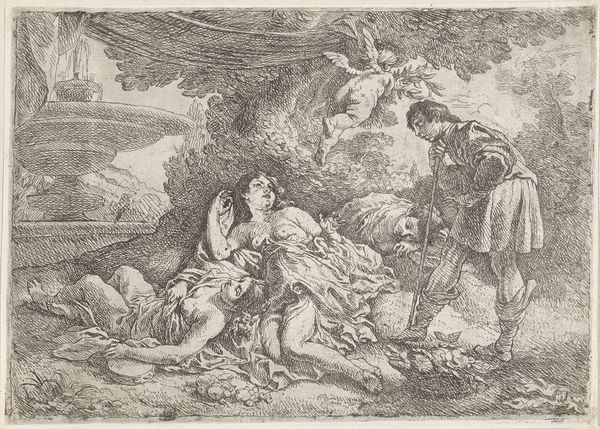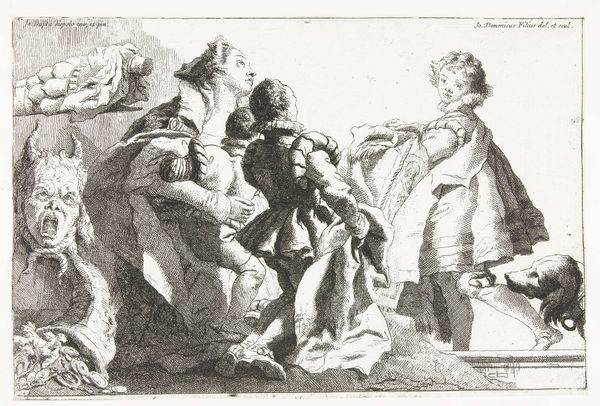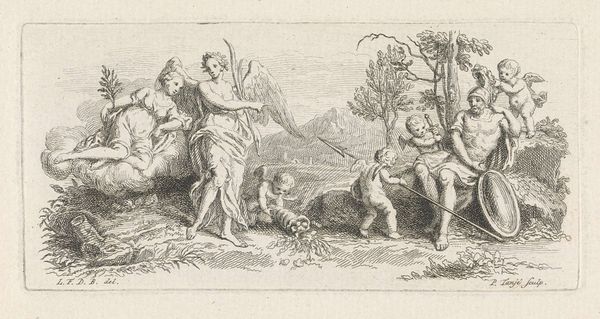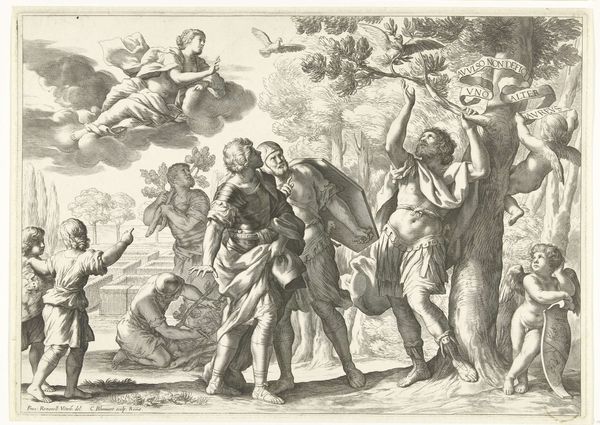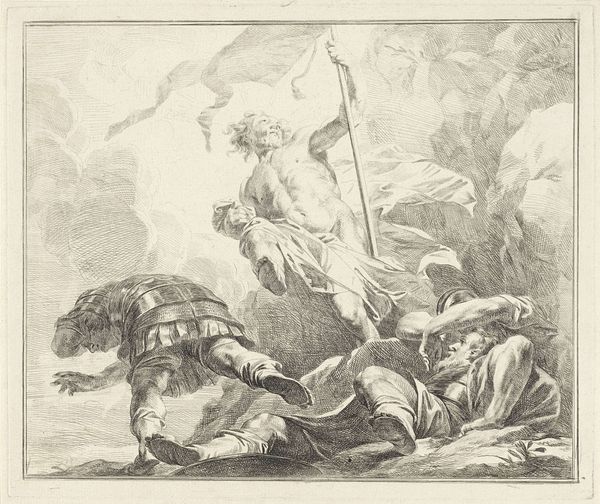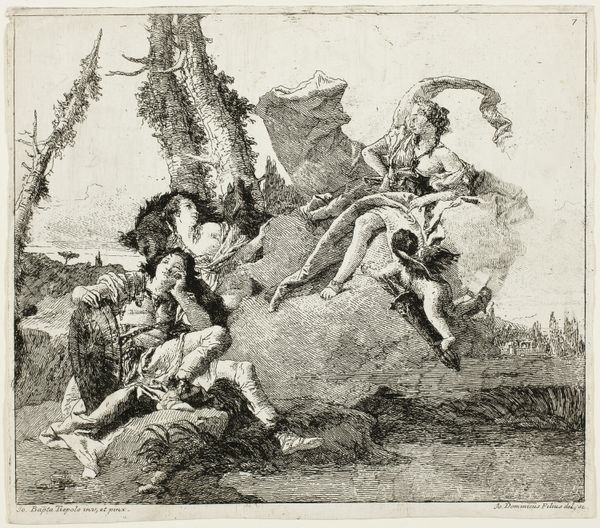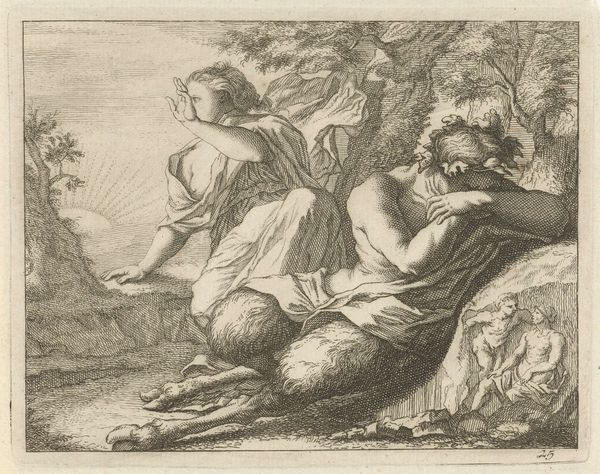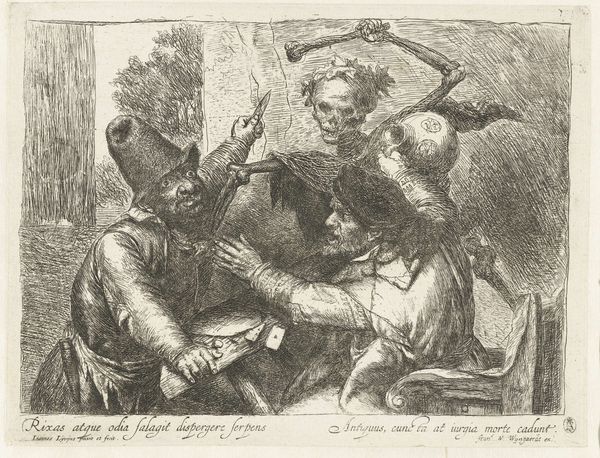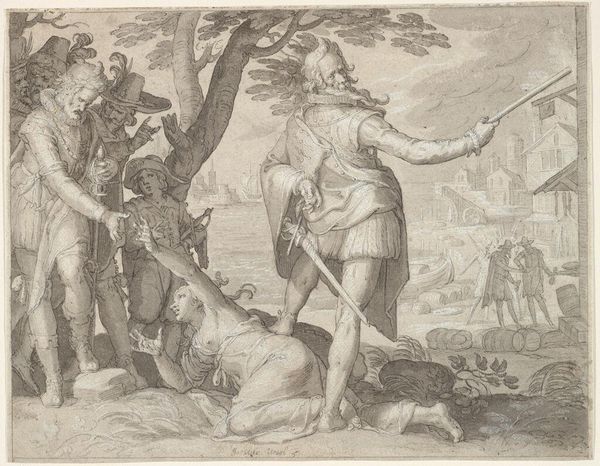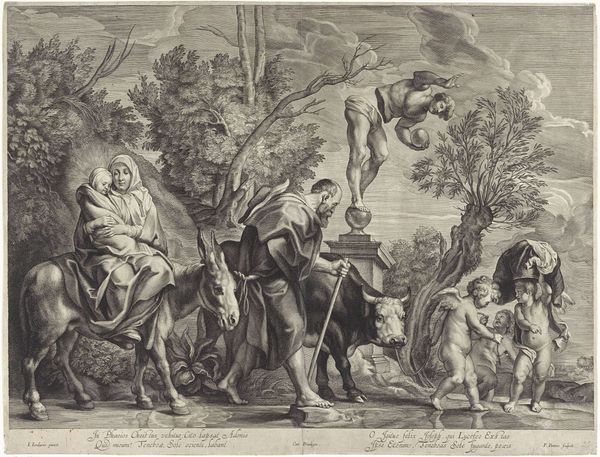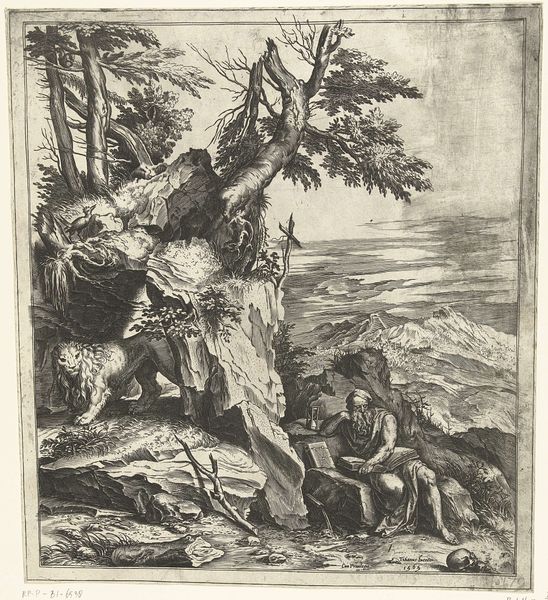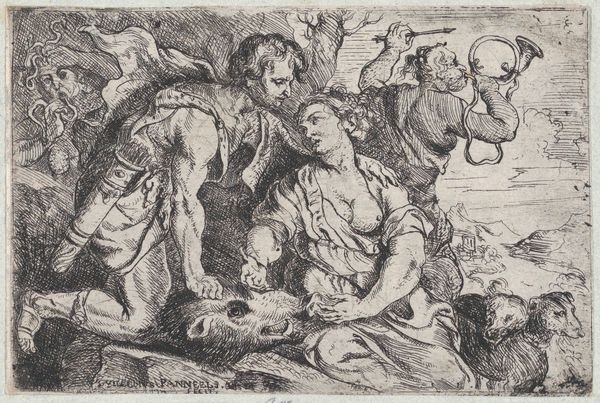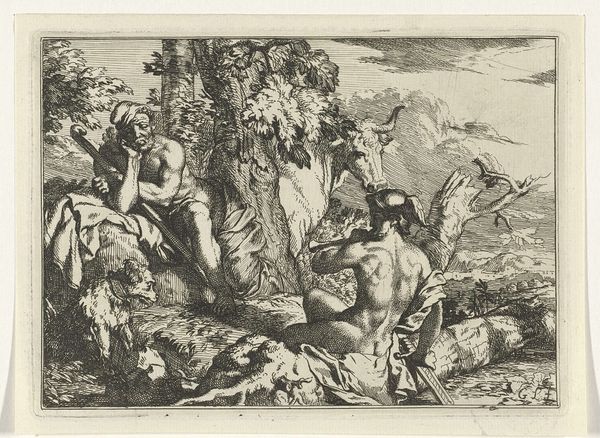
Dimensions: height 256 mm, width 360 mm
Copyright: Rijks Museum: Open Domain
Curator: Here we have Giovanni Domenico Tiepolo's etching titled "Rinaldo Abandons Armida," likely created between 1757 and 1775, a compelling piece executed with pen, pencil, and a confident use of line. Editor: It strikes me as a moment heavy with drama. The way Armida reaches out, desperate, towards Rinaldo, the desaturated look lending an atmosphere of profound melancholy and abandonment. Curator: The image encapsulates a pivotal moment from Tasso’s epic poem *Gerusalemme Liberata*. Armida, the sorceress, is forsaken by the knight Rinaldo, who breaks free from her enchanted island, his duty calling him back to the Crusades. It’s a powerful image, rife with symbolism. Editor: Indeed. And what I find fascinating is how Tiepolo renders this narrative not just as a scene of personal heartbreak, but against a vast landscape. Notice the seemingly limitless mountainous scenery that serves as a backdrop to Armida’s emotional turmoil. Curator: Landscape and narrative are cleverly interwoven here, highlighting Armida’s isolation, yes? Also note how Rinaldo is ushered forward by another warrior—perhaps symbolizing duty, forcing Rinaldo forward in his path. He almost seems to look back with some kind of regret. Editor: The emotional ambiguity is palpable. The tension between love and duty, abandonment and forward progression is mirrored in the artistic decisions: a kind of pre-romantic sensibility in rendering human relationships. We should think about how audiences would relate to this depiction in the social landscape of 18th-century Venice. How was it received at the time, and how do we interpret its symbolism today, within the historical context of colonialism and the exoticisation of the other? Curator: Good questions, as Tiepolo's art was part of the social fabric of Venice. I find that the imagery resonates on a deeply personal level—the agony of separation and unrequited love transcends historical context. Symbols such as this express those cultural sentiments and carry meaning far beyond what was originally intended. Editor: Absolutely. It allows us to connect across centuries. Seeing the choices of lines to depict narrative drama against landscape allows us to appreciate art's lasting impact on both emotional life and political thought.
Comments
rijksmuseum about 2 years ago
⋮
This is a scene from the epic poem Gerusalemme Liberata (Jerusalem liberated) by Torquato Tasso. A story in this 16th-century epos about the First Crusade tells of the sorceress Armida who falls in love with the valiant crusader Rinaldo. She enchants him, and he falls under her spell. When the charm is ultimately broken, Rinaldo, filled with revulsion, turns away from Armida – the moment depicted here.
Join the conversation
Join millions of artists and users on Artera today and experience the ultimate creative platform.
